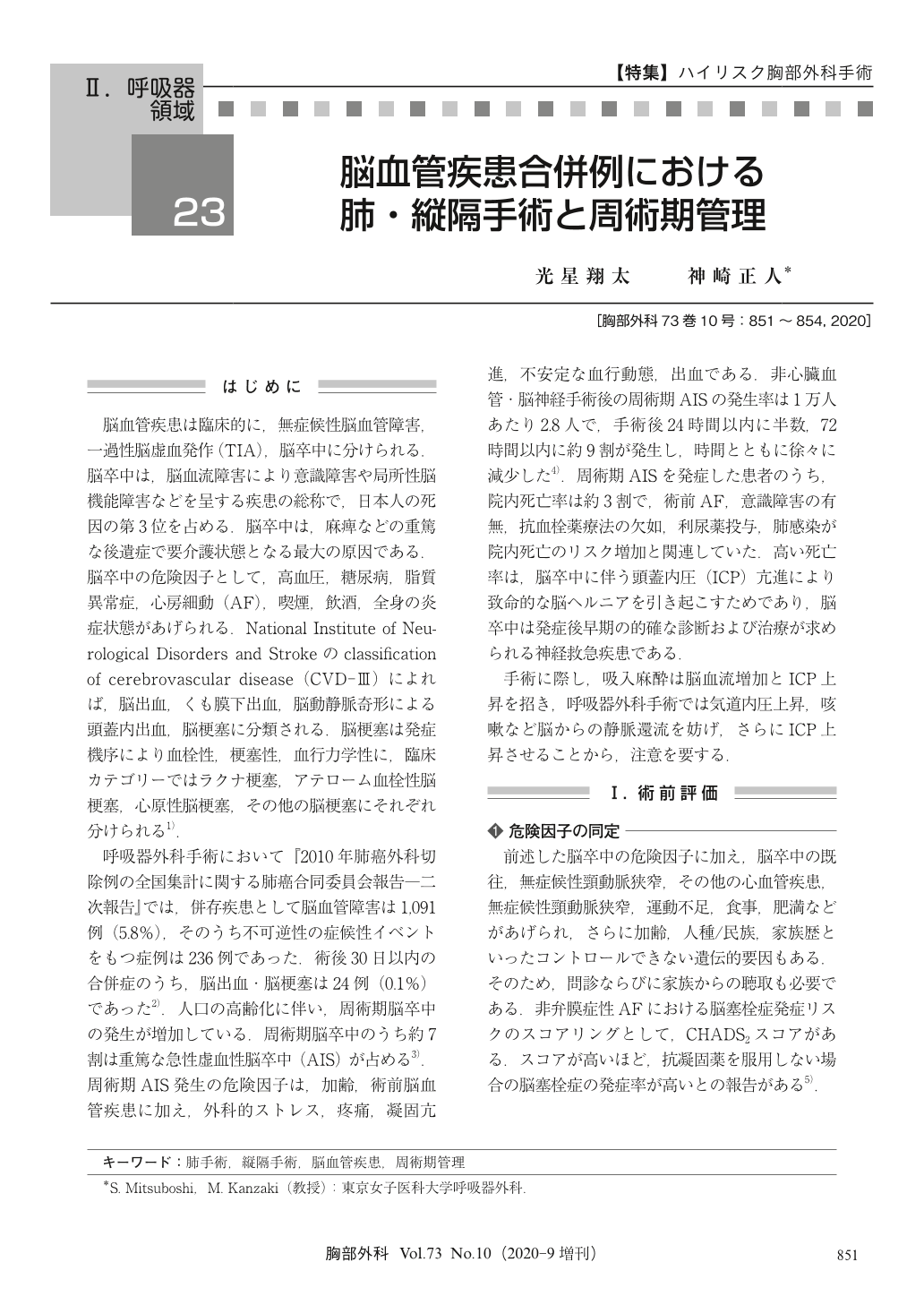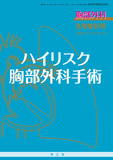Japanese
English
- 有料閲覧
- Abstract 文献概要
- 1ページ目 Look Inside
- 参考文献 Reference
脳血管疾患は臨床的に,無症候性脳血管障害,一過性脳虚血発作(TIA),脳卒中に分けられる.脳卒中は,脳血流障害により意識障害や局所性脳機能障害などを呈する疾患の総称で,日本人の死因の第3位を占める.脳卒中は,麻痺などの重篤な後遺症で要介護状態となる最大の原因である.脳卒中の危険因子として,高血圧,糖尿病,脂質異常症,心房細動(AF),喫煙,飲酒,全身の炎症状態があげられる.National Institute of Neurological Disorders and Strokeのclassification of cerebrovascular disease(CVD-Ⅲ)によれば,脳出血,くも膜下出血,脳動静脈奇形による頭蓋内出血,脳梗塞に分類される.脳梗塞は発症機序により血栓性,梗塞性,血行力学性に,臨床カテゴリーではラクナ梗塞,アテローム血栓性脳梗塞,心原性脳梗塞,その他の脳梗塞にそれぞれ分けられる1).
The Japanese Joint Committee of Lung Cancer Registry reported that 1,091 patients (5.8%) had cerebrovascular diseases as comorbidities in “A report from the Japanese Joint Committee of Lung Cancer Registry;a study of 18,973 surgical cases in 2010;secondary publication”. They reported that 24 patients caused cerebral hemorrhage or cerebral infarction within 30 days after surgery. Since the elderly patient surgery is increasing, the incidence their perioperative stroke is increasing too, often leading to severe conditions. It is necessary to evaluate the risk factors and history of cerebrovascular disease prior to surgery. As most perioperative strokes occur within 3 days after surgery, and the recurrence rate is higher in patients with a history of cerebrovascular diseases, systematic perioperative management should be treated to prevent recurrence in the perioperative period. If patient taking antithrombotic drugs undergo surgery, it is necessary to be informed of the risks such as intraoperative stroke associated with pausing and resuming antithrombotic drugs. Patient with cerebrovascular disease must be diagnosed accurately and promptly, as cerebrovascular disease involves the conditions of ischemia and hemorrhage.

© Nankodo Co., Ltd., 2020


